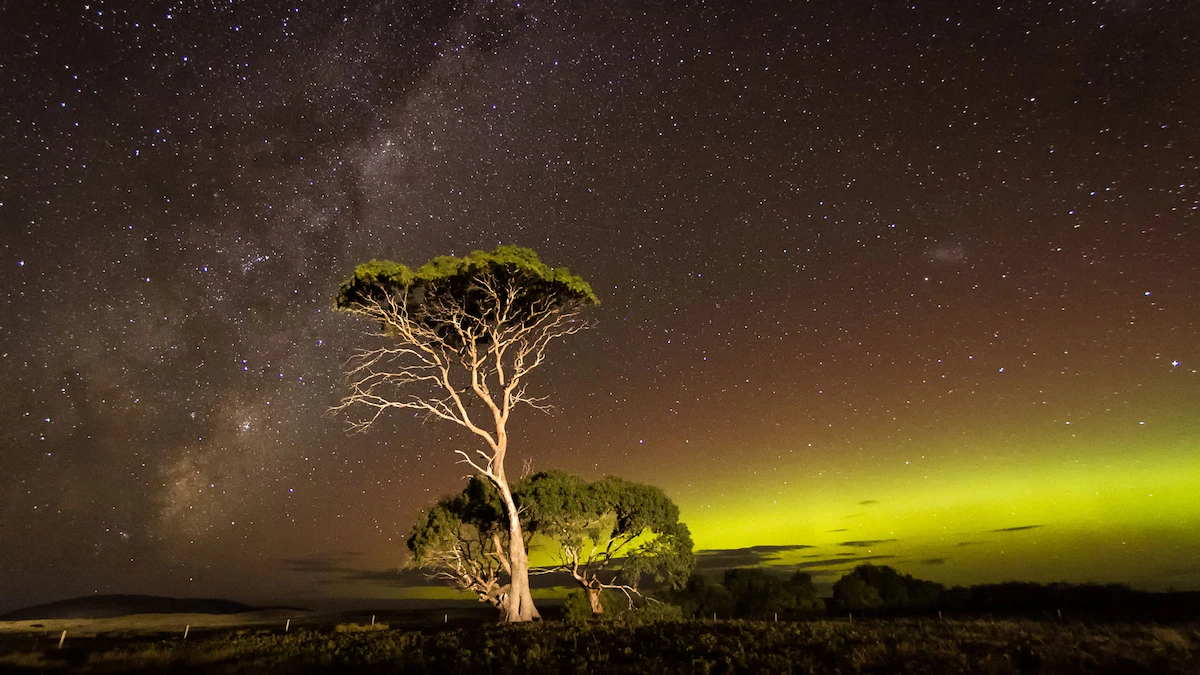Copyright National Geographic

They may sit on opposite ends of the planet, one skirting the Arctic Circle, the other floating above Antarctica, but Tasmania and Scandinavia share more than just latitude extremes. In winter, this southern island channels a distinctly Nordic spirit: quiet, creative, and deeply connected to the natural world. The parallels start with the landscape: glacial lakes, pine forests, wild coastlines. But they run deeper. Like Scandinavia, Tasmania has built a quiet culture around remoteness, creativity, and a deep respect for nature. Winter here isn’t something to get through, it’s something to embrace. Locals retreat to wood cabins, cook with smoke and fermentation, and slow down, embracing a rhythm that feels a lot like the Nordic idea of lagom: just enough. Slow, seasonal dining In both Tasmania and Scandinavia, winter cooking leans on fire, fermentation, and whatever the season offers. “We’re on an island, so we have to use what we can grow here, and that’s all dependent on the seasons,” says Jay Patey, owner of Hobart’s Pigeon Whole Bakers. His bakery, with pastries stacked on open shelves, feels a lot like those in Copenhagen’s bageris. The standard is high, he adds, because Tasmanians are skilled home cooks themselves. “When they visit us, they expect quality. It’s the same in Denmark and Sweden.” That same respect for ingredients runs through the island’s restaurants. Many work almost entirely with produce grown within an hour’s drive. At Hobart’s Dier Makr, Koby Ruzicka builds experimental menus around whatever’s available that day—diners don’t see a menu until they sit down. In nearby New Norfolk, The Agrarian Kitchen harvests directly from its gardens and even makes its own cheese, which features on seasonal menus served in a light-filled dining room that wouldn’t look out of place in Finland. And in the Huon Valley, chef Analiese Gregory has opened Lumachelle, a 10-seat restaurant inside an old goat shed on her property, where she cooks what she forages and fishes herself, sometimes pulling abalone from the icy waters just hours before dinner. (This Australian state produces some of the world's best seafood) Where to forage In the state’s North West, truffle dogs lead you through the fields at Truffle Farm Tasmania, with hunts running all season and ending in a truffle tasting, plus a gooey truffle cheese toastie to finish. Just outside Hobart, an old 1891 railway tunnel has found a second life as a mushroom farm called Tunnel Hill Mushrooms. It’s damp, dark, and a little eerie, but visitors will taste mushrooms cooked on a “train barbecue” and learn how to prepare them at home. Further up the coast, Freycinet Marine Farm lets oyster lovers pull their own straight from the sea. You’ll learn to shuck them on the spot and taste them right there. Embrace the outdoors and sauna culture Tasmania and Scandinavia share a deep reverence for nature, something that feels even more vivid in winter. “About 40 [percent] of the state is national park or conservation land,” says Brett Godfrey, co-founder of the Tasmanian Walking Company. Summer draws the biggest crowds, but winter has its own rewards, with crisp skies and potential for the southern lights. (See Australia's wild beauty—and dark history—on its newest Great Walk) Closer to Hobart, Kuuma Nature Sauna, Australia’s first floating sauna, brings a touch of Finland to local waters. Moored at Margate Marina, it follows true Nordic tradition: heat up first before plunging into the icy sea. Further north, Cradle Mountain and Lake St Clair National Park reveal the island at its most dramatic, with jagged alpine peaks, ancient forests, and glassy lakes that could be mistaken for northern Norway. Walk the Dove Lake circuit for easy wombat spotting and sweeping views, or take on the legendary Overland Track, a six-day hike through Tasmania’s wildest terrain. A season for creativity Just as Scandinavia has its design and dark pop, Tasmania has Dark Mofo, a winter solstice festival that’s part ritual, part rebellion. Each June, Hobart comes alive with performances, large-scale art, communal feasts, and the infamous nude solstice swim. Created by the Museum of Old and New Art (MONA), a subterranean museum known for its mix of ancient relics and provocative modern works, the festival has helped put Tasmania on the global arts map. In August, the Beaker Street Festival takes over the city with a week of science-meets-art talks, performances, and experiments spilling into pubs and public spaces. And for those who prefer their winter rituals in a glass, Tasmanian Whisky Week unites more than 40 distillers across the island for tastings. Where to wine and dine Eating your way through Tasmania feels a bit like tracing the seasons. Launceston, a northern UNESCO City of Gastronomy, is home to Stillwater, an award-winning restaurant with a rotating tasting menu. Just outside town in the Tamar Valley, Josef Chromy and House of Arras are perfect spots for a long lunch and award-winning sparkling wines. In Hobart, winter dining feels warm and grounded. Ogee serves sharing plates of sea urchin butter and handmade pasta, while Oirthir, a newcomer in the countryside, offers a refined tasting menu shaped by nearby farms and waters, with a Scottish touch. For something classic, Peppina at The Tasman serves generous Italian dishes in a lively dining room, with Mary Mary next door perfect for a nightcap. If there’s one thing Tasmanians love almost as much as the outdoors, it’s bread. In Hobart, Pigeon Whole Bakers draws locals first thing in the morning, and Six Russell Bistro’s sausage muffin has a near-cult following. Farther south, Summer Kitchen is a perfect pit stop on the way to the Huon Valley. Don’t miss their carrot cake, a local favorite. On Bruny Island, The Bruny Baker encourages you to pick your sourdough loaves from the fridge and leave cash in an honesty box. Where to stay in Tasmania In Hobart, The Tasman nails city luxury with big, stylish rooms and a breakfast buffet worth waking up for, while MACq 01 is a storytelling hotel with waterfront views. If you’re exploring Cradle Mountain, stay at Cradle Mountain Lodge, a classic winter base with guided walks and roaring fires. In Launceston, Peppers Silo, an old grain silo turned hotel, offers comfort, convenience, and a friendly lobby dog. On the East Coast, Picnic Island near Coles Bay feels straight out of Scandinavia. The private island accommodates just eight guests, with a new suite, on-site dining, and even a resident penguin colony. Satellite Island is another option, exclusive to one booking at a time, which includes use of a stylish two-bedroom boathouse on the water and a three-bedroom weatherboard summer house on the hill. For coastal getaways, Kittawa Lodge on King Island offers off-grid seclusion with all the comforts of a luxury stay, while Freycinet Lodge is a classic base for exploring Freycinet National Park. Inland, Provider House is a quiet cabin in the woods with Japandi-style interiors.



